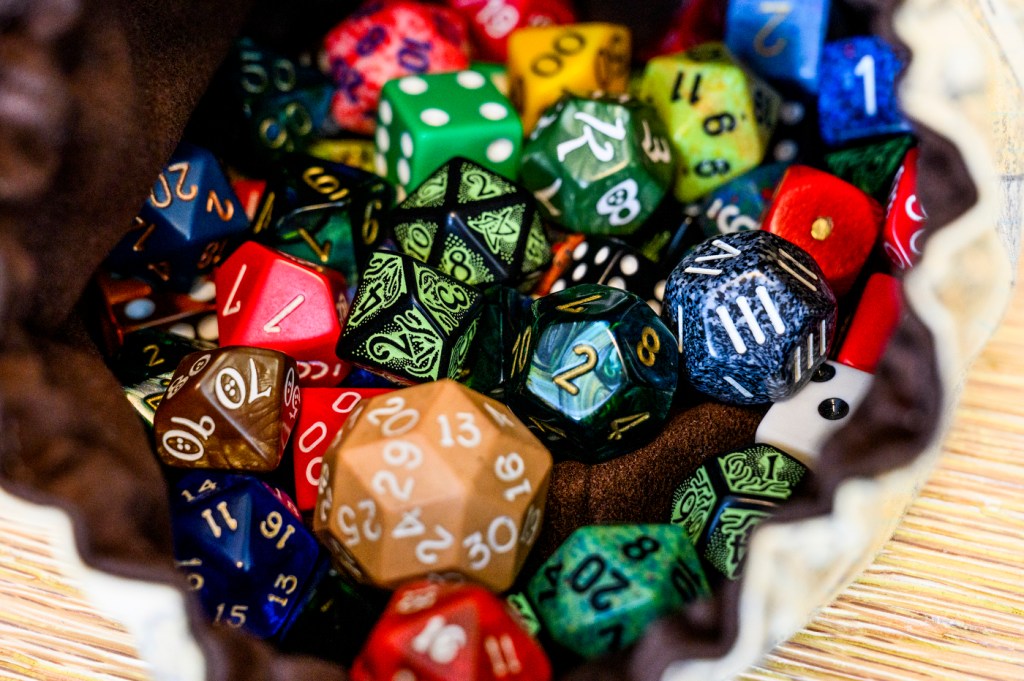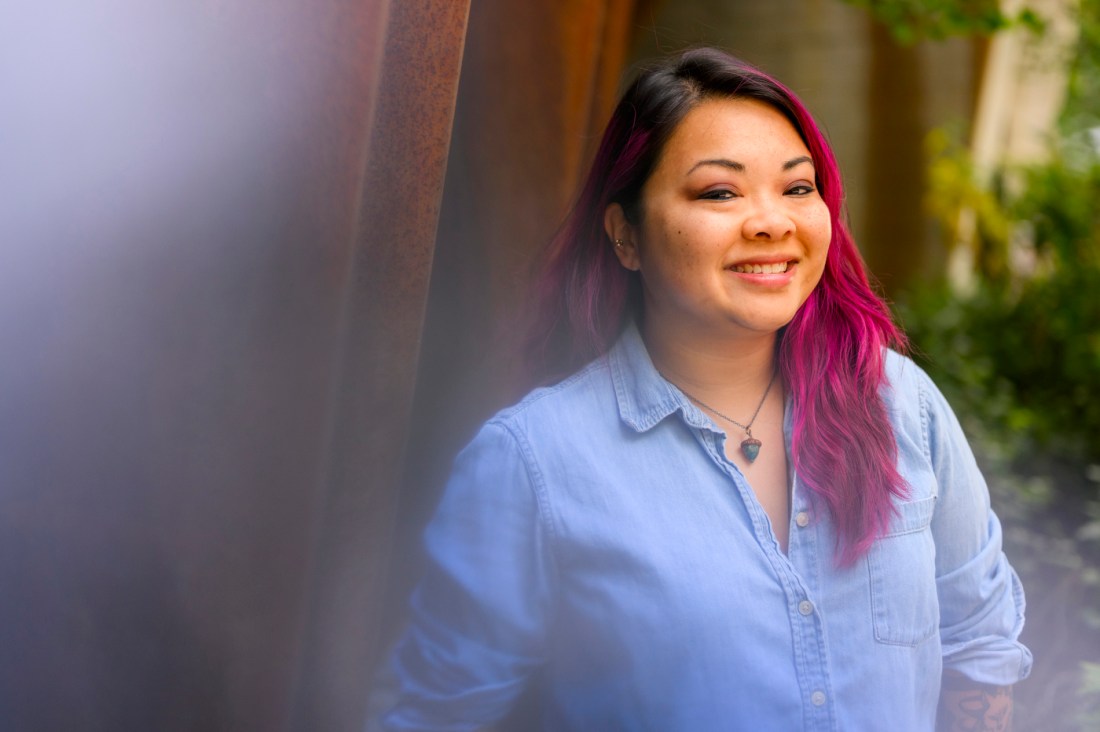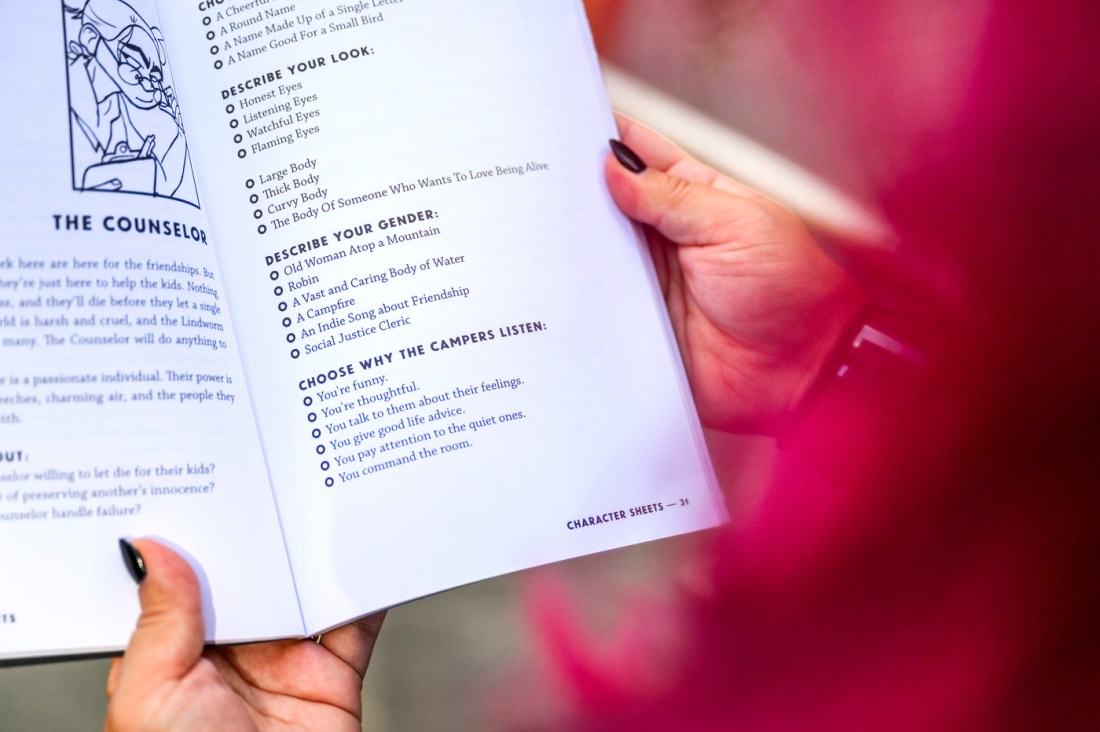Queer tabletop roleplaying games provide valuable lessons that even ‘Dungeons & Dragons’ can learn from, new research finds
By studying how some TTRPGs are putting queerness front and center, Northeastern researchers found ways even ‘D&D,’ the biggest TTRPG in the world, can be more welcoming and inclusive for players.

Decades ago, if you played “Dungeons & Dragons,” you were, at best, labeled a nerd or an outcast and, at worst, a Satan worshiper.
How times have changed.
Now, more than 50 million people have reportedly been involved in “D&D,” the most popular tabletop roleplaying game, or TTRPG, in the world. It was recently adapted into a movie, and livestreamed games of ‘D&D’ have become multimedia franchises in and of themselves.
But in the TTRPG space, “D&D,” which is published by Wizards of the Coast, has not been without its critics, many of whom have pointed out the game’s complicated history with race and gender. More recently, the game’s designers have taken steps to make the game more inclusive, but progress comes slowly to a major franchise like “D&D.”
However, the world of TTRPGs is vast, and there are plenty of games outside of “D&D” that are taking steps to make their tabletops more welcoming. A group of Northeastern University researchers has released research specifically focused on the queer TTRPG space and how some game makers are designing experiences that put queerness front and center and, in the process, make more inclusive experiences for their players.
Alexandra To, an assistant professor of art and design at Northeastern University, game designer and co-author on this research, says the idea at the core of their research is a game design term known as the magic circle.
The idea is that when players enter a game, they are “entering this alternative social space where different behaviors become appropriate,” To says.

In Duck, Duck, Goose, players are tapping people on the head and chasing them in a way that would be out of line outside the game. In TTRPGs, all the players understand that they are roleplaying as a character and going on an adventure with other players who have also created characters to roleplay.
But for queer players, or players who might just want to play a character of a different gender or sexuality, that can come with some risk.
“If you decide to play a classic fantasy game, hopefully you have some relationship with the other players, but you don’t necessarily know that everyone is going to be open to you playing a character of another gender,” To says.
Queer players have always played games like “D&D,” but often they have to “homebrew,” or customize the rules, to make it a more welcoming experience or at least make it clear that players are safe to engage in identity play, To says. The seven games that the researchers included in their study make gender and identity play an explicit part of the rules and mechanics of the game.

“Even though we know that kind of play is permissible in other spaces, naming it explicitly, putting these mechanics out there explicitly so everyone is asked to address that directly is providing a lot of safety and cover for all of the players at the table,” To says. “It’s setting the stage for [how] we’re all going to have a conversation about this and be open in this space together.”
A lot of the work these game designers do to make their games more inclusive starts with how players create their characters.
“Sleepaway,” a TTRPG that puts players in the shoes of camp counselors trying to protect their campers from a supernatural force, lets players choose their gender by pulling words together from two categories. One is a list of adjectives, and the other is a list of nouns, mostly animals.
“Even if you’re not thinking about gender a lot in your everyday life, you have to think about what that ‘rusted eagle’ means to you as a gender in your head if you’re going to interact with this [other character],” says Jailyn Zabala, an author on the research and doctoral student at Northeastern.
Featured Posts
The character sheet provided by Wizards of the Coast to help players create their “D&D” characters doesn’t even include a place to note a character’s gender or sexuality. That doesn’t stop players from including it, but it does suggest what the game’s priorities are, most of which involve creating something like a fantasy “combat simulator,” Zabala says.
Most of the games the researchers looked at prioritized things other than combat, like forming relationships. Even when games involved the potential for combat, they shifted the focus to “narrative things that happen in a conflict, and there are a lot of mechanics for de-escalation and conversation,” To notes.
In “Monster Hearts,” players can take an action in the game to “turn someone on” and their success is determined by rolling dice, regardless of what labels a character might have put on their sexuality. Those situations don’t require characters to change their identities in response. However, Zabala says it serves as an in-game reminder that sexuality is not a choice and that external forces can impact a person’s emotional, physical and sexual responses in a situation.
“That is playing with the idea of the fluidity of sexuality,” Zabala says. “Even if you are identifying a certain way, it’s still possible to feel feelings outside of that.”
The designers of mainstream TTRPGs like “D&D” are starting to push these kinds of conversations and ideas to the forefront to match the diverse player base that is already pushing for change. But To and Zabala say that even the biggest TTRPG in the world could stand to learn a thing or two from these kinds of games.
“A lot of games have been using the same patterns and ways of creating games that have been set in stone … but under that are these baked in assumptions that if you do care about [having these conversations], that should be something you should be trying to challenge,” Zabala says. “I think it is getting more popular even in more popular TTRPG publishers. If ‘D&D’ is going to start putting stuff like that in their games, then it’s like, ‘OK, we’re figuring it out.’”










